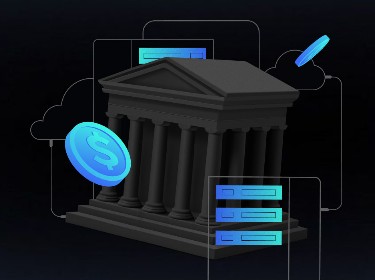A data pipeline facilitates smooth information flow across different stages of data processing. To ensure it functions properly and transforms data into valuable insights, it is important to establish a robust data pipeline architecture.
Data-driven companies are often more successful and achieve better business outcomes compared to those that do not fully utilize their data resources — and to effectively handle and manage large volumes of data, data pipelines prove extremely useful.
The data pipeline market is projected to reach $33.87 billion by 2030, which demonstrates that there is a growing recognition of their integral role in enabling data-driven decision-making and optimizing business operations.
However, for a data pipeline to be viable and effective, it must have a robust underlying architecture.
In this article, we will delve into the essentials of data pipeline architectures and offer practical tips alongside established practices for constructing a solid framework for your data pipelines.
Discover how our professional data analytics consulting and integration company can help your business shape resilient strategies for long-term success
What is data pipeline architecture?
Data pipeline architecture involves the structured design and configuration of systems and processes that enable the automated flow of data from its source to its destination for storage and analysis.
The architecture should efficiently manage various data formats and large volumes of data while ensuring data integrity and compliance with security standards. Plus, it should be scalable and adaptable to meet evolving data demands and technological advancements.
What are the main components of data pipeline architecture?
The core components and constituents of data pipeline architecture normally include:
Data sources — the origins from which data is collected such as databases, cloud storage, and APIs.
Data ingestion — the process of importing, transferring, loading, and processing data from the sources.
Data storage — repositories where data is held, which could be databases, data warehouses, or data lakes, depending on the needs of the system.
Data processing — the computational steps that transform raw data into a format suitable for analysis. This might involve aggregation, filtering, or other transformations.
Data orchestration — tools and workflows that coordinate the movement of data through its lifecycle in the pipeline.
Data monitoring — systems that track data flow and performance of the pipeline and alert administrators about any issues or bottlenecks.
Why is data pipeline architecture important?
A well-designed data pipeline architecture plays a huge role in maintaining data integrity and consistency, both of which are vital factors for accurate data analysis and decision-making. It also supports scalability and enables businesses to manage increasing volumes of data without compromising performance.
Moreover, a robust architecture minimizes the risk of data loss and errors, streamlines operations, and improves the reliability of data-driven insights. Therefore, a properly established data pipeline architecture is essential for optimizing data utilization and performance in any data-intensive environment.
What are the five most common data pipeline types?
Before developing a data pipeline architecture, it is important to distinguish between different types of data pipelines as this determines the technical requirements, processing capabilities, and resource allocation necessary to meet specific data handling objectives.
Below are the five most common types of data pipelines.
1. Batch data pipelines
Batch data pipelines process data in groups or batches at scheduled times. They collect data over a certain period, and then process it all at once.
Batch pipelines are typically less complex and more cost-effective when dealing with large volumes of data that do not require immediate action. This type is suitable for scenarios where real-time data processing is not critical such as daily sales reports or monthly inventory updates.
2. Real-time data pipelines
Real-time data pipelines handle data as soon as it becomes available, providing instantaneous processing to enable immediate insights or actions.
These pipelines prove to be useful for applications that rely on timely data such as fraud detection systems or live traffic monitoring. The architecture of real-time pipelines must be highly efficient and capable of handling potentially vast streams of data with minimal latency.
Delve into real-time data visualization and see where and how it can be used
3. Streaming data pipelines
Streaming data pipelines are a subtype of real-time pipelines that specifically deal with continuous data streams. They can process and analyze data in real time as it flows from the source to the destination.
Streaming pipelines are suitable for scenarios where ongoing input like video or sensor data, needs constant analysis. These pipelines utilize complex event processing engines to handle the data on the fly.
4. Hybrid data pipelines
Hybrid data pipelines combine aspects of both batch and real-time processing methodologies to provide versatile data handling capabilities. They enable companies to balance between timeliness and computational efficiency and can adjust the processing strategy based on data importance and urgency.
Hybrid pipelines are particularly useful in environments where both batch-processed historical data and real-time data are needed for comprehensive analytics.
5. ETL (Extract, Transform, Load) data pipelines
ETL data pipelines are structured to extract data from various sources, transform it to fit analytical needs or business rules and load it into a storage system like a data warehouse. This process is important for consolidating disparate data into a single repository where it can be systematically analyzed and accessed.
Normally, ETL pipelines are foundational in data warehousing strategies as they have the capacity to support complex data transformation and integration tasks.
Make sure to familiarize yourself with the 50 key big data statistics and the must-know trends of 2024 and beyond
Top 10 data pipeline architecture best practices
![]()
Our IT consulting company collected the 10 best practices for developing solid data pipeline architectures that you can consider implementing in your process to enhance the scalability, security, and performance of your data pipelines.
1. Embrace modular design in data pipelines
A modular design often results in enhanced system adaptability. When components operate independently, the addition or modification of a module does not necessitate a full system halt or extensive downtime, which can be crucial in operational environments where data flow continuity is critical.
As well as this, such a setup allows for straightforward updates and rapid integration of new technologies, streamlines troubleshooting, and isolates system issues without affecting the overall pipeline functionality.
2. Prioritize data integrity with systematic validation
Systematically implementing checks for accuracy and completeness throughout the pipeline reduces the propagation of errors and supports reliable data processing, which is crucial for maintaining the credibility of analytics results.
3. Automate monitoring and alerts
The integration of automated monitoring systems in data pipelines facilitates the early detection of anomalies and potential bottlenecks as they provide real-time feedback on pipeline performance.
This enhances the capability to respond swiftly to any discrepancies or failures in data handling and maintain a seamless flow and high reliability of data throughout the entire pipeline.
4. Design for scalability from the start
Incorporating scalability into the initial design of data engineering pipeline architecture helps secure the ability to handle increasing volumes and complexities of data without performance degradation.
Therefore, consider selecting technologies that support distributed computing, as this will enable you to scale easily, establish benchmarks for performance under varying loads, and design the pipeline to automatically adjust based on current data processing needs.
5. Maintain rigorous documentation standards
Thorough documentation is part and parcel of the successful management and operation of data pipelines. It serves a wide range of purposes, including troubleshooting, training for new team members, and providing a basis for future modifications or enhancements.
Discover how the PixelPlex developers created this data-driven business intelligence solution that empowers Web3 users to analyze NFT collectibles, detect fraudulent activities, and minimize risks
6. Optimize with parallel processing
Utilizing parallel processing, data pipelines can handle multiple streams of data concurrently, which optimizes the overall efficiency of data handling.
As well as this, the effective use of computational resources through parallel processing minimizes latency and speeds up data processing times across various stages of the pipeline.
7. Implement strict access controls
Setting up stringent access controls can help businesses ensure that only authorized personnel can access or modify the data pipeline.
This data pipeline practice secures sensitive data against unauthorized access and potential breaches and even makes it possible to maintain compliance with industry regulations and protect the integrity of data.
8. Regularly update your data storage solutions
Regular assessments and updates of data storage solutions are necessary to accommodate evolving data types and growth.
Besides, keeping the storage environment optimized for current and future needs establishes a balance between cost and performance.
9. Integrate robust error-handling mechanisms
Robust error-handling mechanisms within the data pipeline architecture are vital for minimizing the impacts of potential failures while automatic identification, logging, and correction of errors help maintain the integrity and reliability of data flows.
On top of this, you can develop a hierarchical error-handling framework that manages errors at multiple levels of the pipeline. To go the extra mile, consider implementing self-healing processes that can resolve common data discrepancies without manual intervention, thus preserving data throughput and integrity.
10. Foster a culture of continuous improvement
A culture of continuous improvement among teams managing data pipelines enhances adaptability and innovation.
In addition to this, consistent performance reviews and feedback mechanisms enable the identification of inefficiencies and potential improvements, which drives ongoing refinements in pipeline operations over time.
How to design a solid data pipeline architecture in 7 steps?
![]()
Even though our team believes there is no one-size-fits-all approach when it comes to developing data pipeline architecture, there are still some universal steps that should be taken during the process.
So, let’s delve into the seven steps that will guide you through an approximate data pipeline architecture development process.
Step 1. Understand data origins and formats
The initial step encompasses a detailed assessment of all data sources, including databases, APIs, and external systems, and their respective formats like CSV, JSON, or real-time streams. A clear understanding of these elements facilitates the selection of integration tools and techniques that are most appropriate for processing diverse data efficiently.
Step 2. Select a processing framework
Choosing the right processing framework depends on specific data attributes.
Batch processing frameworks like Apache Hadoop are ideal for large-scale analytics tasks that do not require immediate responses whereas Apache Kafka and Apache Storm are more suitable for processing continuous data streams in real time, providing immediate outputs and insights.
Step 3. Implement data quality mechanisms
To ensure high data quality, mechanisms for validation, cleansing, and standardization must be embedded early in the pipeline. The processes involve automated scripts that detect and rectify errors, remove duplicates, and transform data to meet the uniform standards that are necessary for accurate downstream processing and analysis.
Step 4. Choose a storage solution
The choice of storage solution should both accommodate current data volumes and scale seamlessly with future growth. This might involve dynamic resource allocation in cloud environments or the use of scalable databases such as NoSQL for handling large, unstructured datasets without performance degradation.
Step 5. Establish a secure data environment
Security protocols must encompass both encryption techniques and comprehensive access controls to safeguard data throughout its lifecycle. This includes implementing role-based access controls (RBAC), using secure encryption standards for data at rest and in transit, and conducting regular security audits to identify and mitigate potential vulnerabilities.
Moreover, to provide a more robust security posture, you can consider DevSecOps consulting services, which will help you integrate security practices throughout your development process and ensure your data remains safe and compliant.
Find out more about big data security analytics and explore how it helps businesses enhance their security posture
Step 6. Provide efficient data flow management
Effective data flow management requires advanced monitoring tools that can dynamically adjust workloads and re-route data streams to optimize performance and minimize latency.
The tools should provide real-time analytics and alerts to ensure that data efficiently moves through the pipeline and reaches its intended destinations promptly.
Step 7. Monitor the performance
Adopting a strategy of ongoing assessment and refinement and bolstering it with DevOps practices like continuous integration and deployment (CI/CD) keeps the data pipeline current and efficient.
Moreover, frequent evaluations and updates, guided by the latest advancements in data processing technology and evolving business needs, help maintain the pipeline’s effectiveness and adaptability.
Closing thoughts
Data pipelines are essential because they streamline the process of gathering, transforming, and delivering data, which enhances the accuracy and efficiency of data operations and insights. To accomplish this, however, businesses must develop a robust data pipeline architecture as this will enable them to manage and utilize their data resources more effectively and ultimately guide them towards their desired outcomes.
For businesses seeking to improve their data operations or kickstart new data-intensive projects, our PixelPlex team is prepared to provide support and expertise.
Our professional big data services extend to:
- Big data consulting
- Data science development services
- Data security services
- Data engineering and architecture
- Big data integration
- Data visualization consulting services
- Data quality assurance
- Data governance and security
- Business intelligence services
- Web accessibility consulting services
Our experience also extends to a wide range of internal products, from a blockchain-powered document management system DocFlow to a comprehensive Know Your Transaction solution.
Contact us today to discover how our offerings can transform and enhance your data management strategies and propel your business forward.




